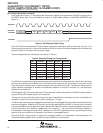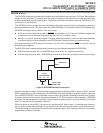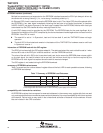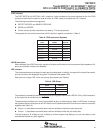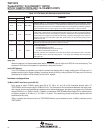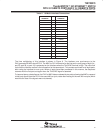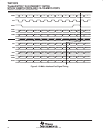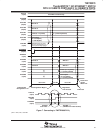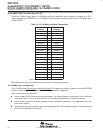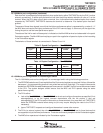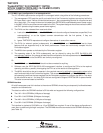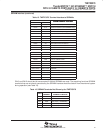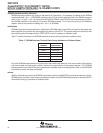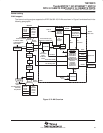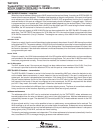
TNETX3270
ThunderSWITCH 24/3 ETHERNET SWITCH
WITH 24 10-MBIT/S PORTS AND 3 10-/100-MBIT/S PORTS
SPWS043B – NOVEMBER 1997 – REVISED APRIL 1999
34
POST OFFICE BOX 655303 • DALLAS, TEXAS 75265
10-/100-Mbit/s MAC interfaces (ports 24–26)
Unlike the 10-Mbit/s ports, each 10-/100-Mbit/s port has a dedicated set of signals to interface to its PHY.
Table 12 shows how a TNETE2101 10-/100-Mbit/s PHY would be connected to one of the 10-/100-Mbit/s ports
of TNETX3270.
Table 12. 10-/100-Mbit/s Interface Connections
SWITCH
TERMINAL
TNETE2101
TERMINAL
MxxTCLK ← MTCLK
MxxTXD3 → MTXD3
MxxTXD2 → MTXD2
MxxTXD1 → MTXD1
MxxTXD0 → MTXD0
MxxTXEN → MTXEN
MxxTXER → MTXER
MxxCOL ← MCOL
MxxCRS ← MCRS
MxxRCLK ← MRCLK
MxxRXD3 ← MRXD3
MxxRXD2 ← MRXD2
MxxRXD1 ← MRXD1
MxxRXD0 ← MRXD0
MxxRXDV ← MRXDV
MxxRXER ← MRXER
MxxLINK ← SLINK
MDCLK → MDCLK
MDIO ↔ MDIO
MRESET → MRST
Where xx = 24, 25, or 26, y = 0–3
Other differences from the 10-Mbit/s ports are noted in following paragraphs.
10-/100-Mbit/s port configuration
The 100-Mbit/s ports (24–26) can negotiate with the PHY (speed and duplex) at power-up via the EEPROM
contents using the MxxFORCE10
and MxxFORCEHD terminals, respectively.
Each of these terminals (per port):
Has an integral 50-µA current-source pullup resistor. The system designer must decide if this is sufficient
to achieve a logic-1 level in a timely manner or if an external supplementary resistor is required.
Has a strong open-drain pulldown transistor, which is enabled by setting to 1 the appropriate bit in the
Portxcontrol register.
Is connected (via synchronization logic) to the appropriate bit in the Portxstatus register. These bits directly
control the configuration of the ports.



